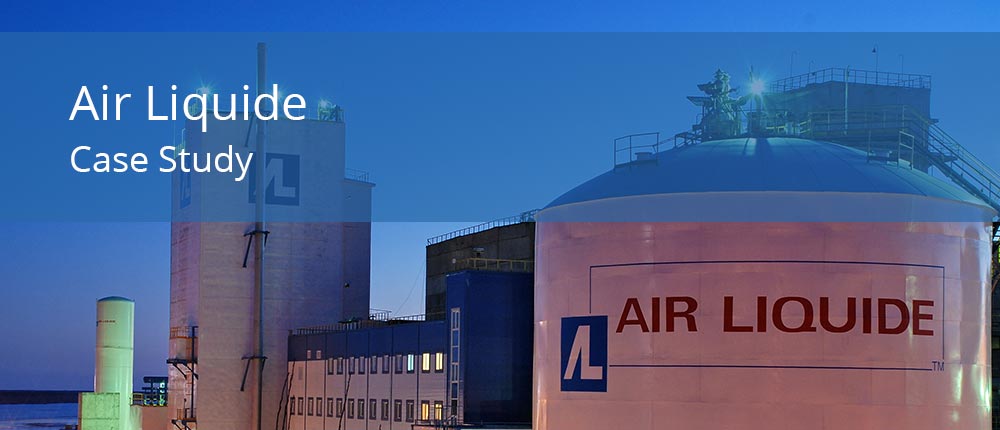Standardizing procedures increases plant output
An engineering team at the Air Liquide ASU facility in Ingleside, Texas has recently enhanced productivity by standardizing connections between the company’s air separation units (ASU) and a variety of distributed control systems (DCS), as highlighted in an article in CONTROL magazine. The challenge was to build a system flexible enough to interface with different DCS systems without having to reconfigure each time. Using the Bridging feature of Skkynet’s DataHub industrial middleware, along with a custom DataHub script created in collaboration with Software Toolbox, Air Liquide is expecting to produce an additional 500 tons of liquid oxygen per year.
“This project supports our modular procedure automation (MPA) goals to increase efficiency, optimize production, and reduce wear and tear on equipment–all while helping operators be more productive and act more confidently,” said Marty Martin, Director, Process Controls at the Center of Technical Expertise for Air Liquide.
The benefits are significant. The ASU system is designed to process both argon and liquid oxygen (LOX). But the demand for argon is irregular, so they often switch over to producing LOX. By automating reconfiguration between argon and LOX production, the two-hour startup process has been cut to just 45 minutes. This extra time translates into additional processing capacity, which leads to the increased production.
At the start of the project, while still in the planning stages, the engineering team turned to Software Toolbox for advice on possible software alternatives. “When Air Liquide shared their requirements with us, the DataHub came immediately to mind as the easiest and most reliable approach,” said Win Worrall of Software Toolbox, who worked closely with the Air Liquide team throughout the project.
Easy integration, no disruption
One reason for choosing the DataHub was that it connects to legacy equipment and systems with no disruption, and can seamlessly integrate them with more modern control systems as they are upgraded over time. The DataHub can connect to a customer’s production system while in operation, and all required functionality is implemented with no code changes or system shutdowns required. This should go over well with Air Liquide customers.
At the Ingleside facility, the first implementation was to connect a legacy Foxboro DCS running an OPC DA server to a more modern DeltaV PK Controller with an OPC UA server, used for supervisory control. The engineering team made the connection using the DataHub’s Bridging feature, which supports bridging even between servers that use different protocols.
Because they were creating a hands-off, automatic link between the supervisory system and the control system, the team had to ensure that certain safeguards were built in. For the PK Controller to write to the DCS, there were three safety-related conditions: 1) The PK Controller modular logic has to be ready to write, 2) the communication link must be up and running, and 3) the DCS has to be ready to receive the writes. In addition, the team had to check initial values on start-up, and not overwrite existing data with new data under certain conditions.
A reusable DataHub script
To meet these and similar conditions for when and how the data gets transferred, Worrall worked with the Air Liquide team to write a DataHub script. The DataHub scripting language, Gamma, can access the values of each point in the DataHub in real time, and is fully integrated with all DataHub functionality. The completed script loads all bridge configurations and all related conditional information from a text file when the DataHub first starts up. Future implementations of the system at other locations can use the same, standard script, with a modified text file to match the local ASU or DCS systems.
“Deploying robust modular process automation like this is only the beginning of Air Liquide’s larger vision,” said Martin. “We’ve demonstrated that if operators can start and stop equipment in a more convenient fashion, they’ll take steps to operate more optimally when the opportunity presents itself.”
The system has been running on the production system for months now, and plans are underway to install it at other Air Liquide customer locations in the USA and worldwide. “We are pleased with the success of this project,” said Worrall. “Once we understood the logic of the conditional bridging, it was simply a matter of coding it into the script. The DataHub takes care of the rest.”





